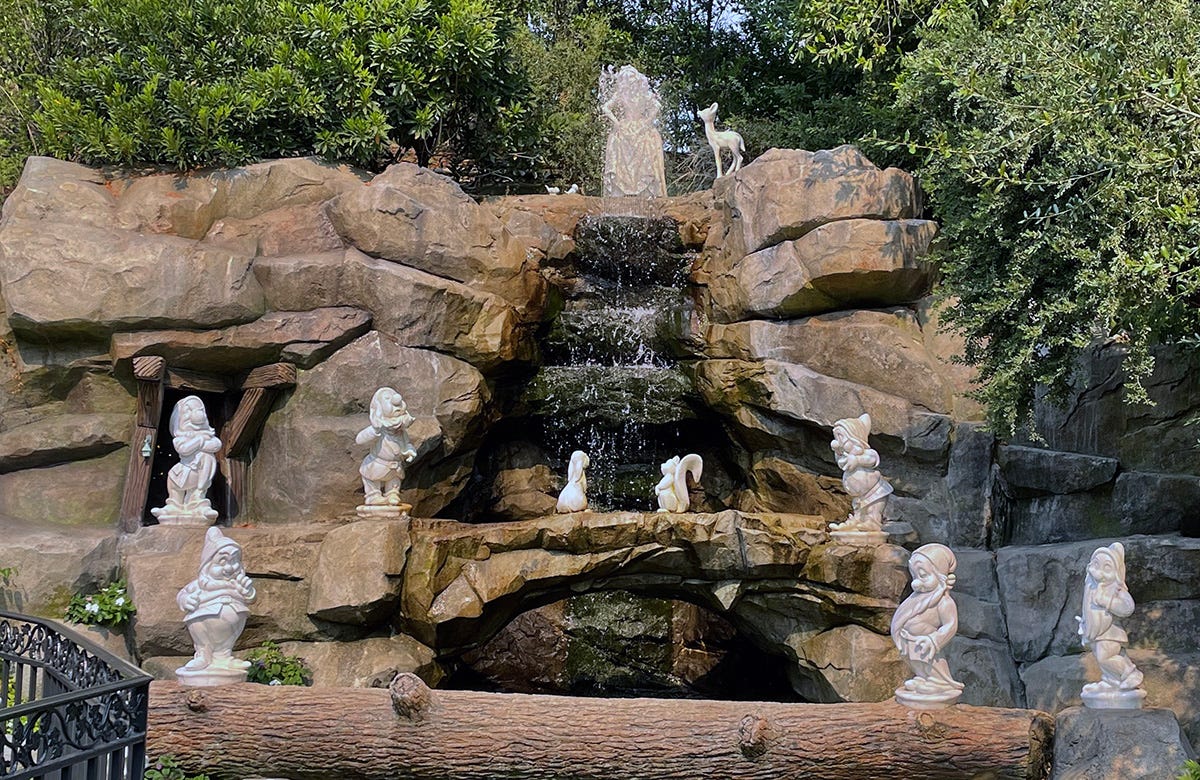Disneyland's Master Illusion: The Ingenious Fix for the Snow White Problem
Monday Magic: The True Story of Disneyland's Snow White Grotto
The collection arrived from Italy, nestled in straw-filled crates, each holding a cool, smooth form carved from the purest Carrara marble. Walt Disney, his eyes twinkling with the delight of a child unwrapping a gift, surveyed the figures. They were Snow White and the Seven Dwarfs, rendered in elegant detail. He loved them, this tangible piece of his animated dream.
Disney beckoned Disney Legend John Hench, a man whose imagination seemed as boundless as the California sky, and said he wanted these statues to have a home in Disneyland, according to the Disney Parks Blog.
Hench, a visionary at WED Enterprises, felt the weight and the wonder of Walt's request. He wandered the nascent landscape of the park in his mind, searching for the perfect setting. Then, like a melody discovered in the rustling leaves, the idea of a grotto bloomed. Tucked away, a secret, enchanting alcove where Snow White and her companions could reside.
The year was 1960 when the vision began to take shape. He imagined a tiered fountain, water cascading gently over moss-covered stones, the marble figures nestled amongst lush greenery. But a curious challenge presented itself. As the sculptures were arranged, a visual discord struck John. Snow White, the fair maiden, stood the same height as Dopey, Grumpy, and the rest of the jovial crew. It was as if they were all siblings of the same stature.
The mystery of their uniform height was eventually traced back to an unexpected source: a set of gift soaps, molded identically to fit neatly within their packaging. The Italian sculptor, Leonida Parma, working from these charming but dimensionally equal models, had faithfully recreated their proportions in marble.
Hench, however, was a master of illusion. He understood the subtle dance of perspective. Drawing upon the same ingenious technique that lent Sleeping Beauty Castle its soaring grandeur, he conceived a solution: forced perspective.
He designed the grotto with Snow White placed high upon the uppermost tier of the fountain. As guests approached, looking up at her graceful form, the distance and elevation would create the illusion of her being taller, more delicate, the proper scale against her smaller companions below. To further enhance the enchantment, John added smaller figures – deer frozen mid-leap, curious bunnies twitching their noses, and vibrant birds perched on rocky outcrops. These additions reinforced the sense of depth and made Snow White’s elevated position feel natural.
Inspired by a fountain he had admired in the quaint French town of Brie, Hench envisioned gentle streams of water that would add a touch of magic and tranquility to the scene. Walt, ever the practical dreamer, added his own touch: a Wishing Well nestled nearby. This served a dual purpose – providing a designated spot for guests to toss their coins, ensuring they could be easily collected for charity, and discouraging the tradition of tossing them into the castle moat.
On April 9, 1961, Walt Disney dedicated the Snow White Grotto.
For years, the story was that these sculptures were a generous gift from Italian sculptor Parma. Yet, a tour of Walt Disney Imagineering a few years ago shed new light on the matter: documents found after Hench's passing confirmed Disney had commissioned them. The irony lay in the execution: the dwarfs were each 31 inches tall, but Snow White was only 39 inches. Faced with a $2,000 cost to resculpt Snow White versus a $611 expense for carving small animals to create forced perspective, Disney's choice was undoubtedly the latter.
Time and the elements had begun to leave their mark on the serene marble figures nestled within the grotto. Their once brilliant Carrara white gradually softened, acquiring the natural patina of age. Driven by a desire to preserve this cherished scene, a comprehensive restoration was undertaken. Expert artisans meticulously molded Parma's original sculptures, ensuring every intricate detail was captured. These molds then served as the basis for new, durable fiberglass figures, which were carefully painted to perfectly mirror the appearance of the classic marble.





An interesting glimpse into a beloved Disneyland treasure. Thanks!